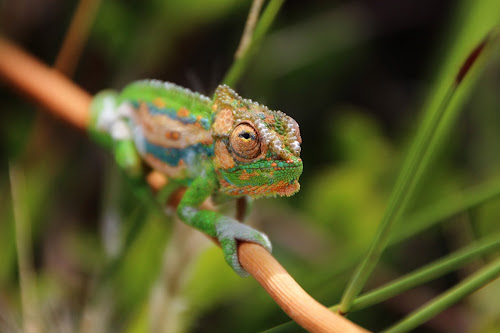Author: Harriet Box
June is Environment Month. The spotlight was trained on the Cape Flats Nature Reserve at UWC to highlight the diversity of fauna within this 34ha reserve.
(Published - 17 June 2020)
June is Environment Month, and recently, on 15 June 2020, Nature Photography Day was celebrated. To celebrate, the spotlight was trained on the Cape Flats Nature Reserve at the University of the Western Cape (UWC) to highlight the diversity of fauna within this 34ha reserve.
Environmental Education Officer and Conservation Photographer, Laurenda van Breda, who takes on a leading role in organising the reserve’s annual faunal survey, shared some of her nature photographs taken inside the Cape Flats Nature Reserve and gave an update on their progress and highlights from the latest faunal survey.
She explains, “This survey is a skills training opportunity for students to determine the diversity of animal life within the reserve.
“It is an annual event in October which gives students, community volunteers, experts and reserve staff the opportunity to take stock of the reserve’s animal life in a fun, bundu-bashing day/night experience.”
Cape Cobra (Naja nivea)
Van Breda adds, “We make use of five motion sensor cameras and camera traps, as well as
150 Sherman traps that are placed throughout the reserve to help determine the reserve’s diversity.
“We have a feature unique to our reserve - a caracal - which is a nocturnal animal and is therefore rarely seen. Other mammals include small grey mongoose, common genet and polecat.
“We know that reptiles like the Cape Cobra (Naja nivea) and the Cape dwarf chameleon (Bradypodion pumilum) are present, but they too are rarely seen. The reserve is also a great bird watching spot with over 100 bird species.”
With last year’s survey, the wetlands was selected as their focus area.
“With such a small reserve, we keep thinking nothing new will pop up. Each year, the survey surprises us with more than one new species we’re able to add to the list. This year was no different with three additions and one re-addition,” says van Breda.
Kestrel, Rock (Falco rupicolus)
“The southern grey-headed sparrow (Passer diffusus), fork-tailed drongo (Dicrurus adsimilis) and Diederick cuckoo (Chrysococcyx caprius) were added to the list during the survey, and the little rush-warbler (Bradypterus baboecala) was added in August during another survey. The hairy-footed gerbil (Gerbillurus paeba) was removed from the list after it was not seen for many years, but we are happy to have found it and re-added it to the list.
“To us, our scorpions all look alike, but to the expert eye, the tracks and burrow of the Cape burrowing scorpion (Opistophthalumus capensis) were found, and the species was added to the list.”
She recalls that at one point the reserve had a feral cat problem, resulting in a drop in rodent diversity. Only the striped mouse (Rhabdomus pumilio) was seen. With the problem solved, diversity increased.
Van Breda says about her conservation photography: “I think I am very fortunate to have the opportunity to work in nature and share environmental education through photography. This way I get to do two things I love at the same time.”
Cape dwarf chameleon (Bradypodion pumilum)





No comments:
Post a Comment